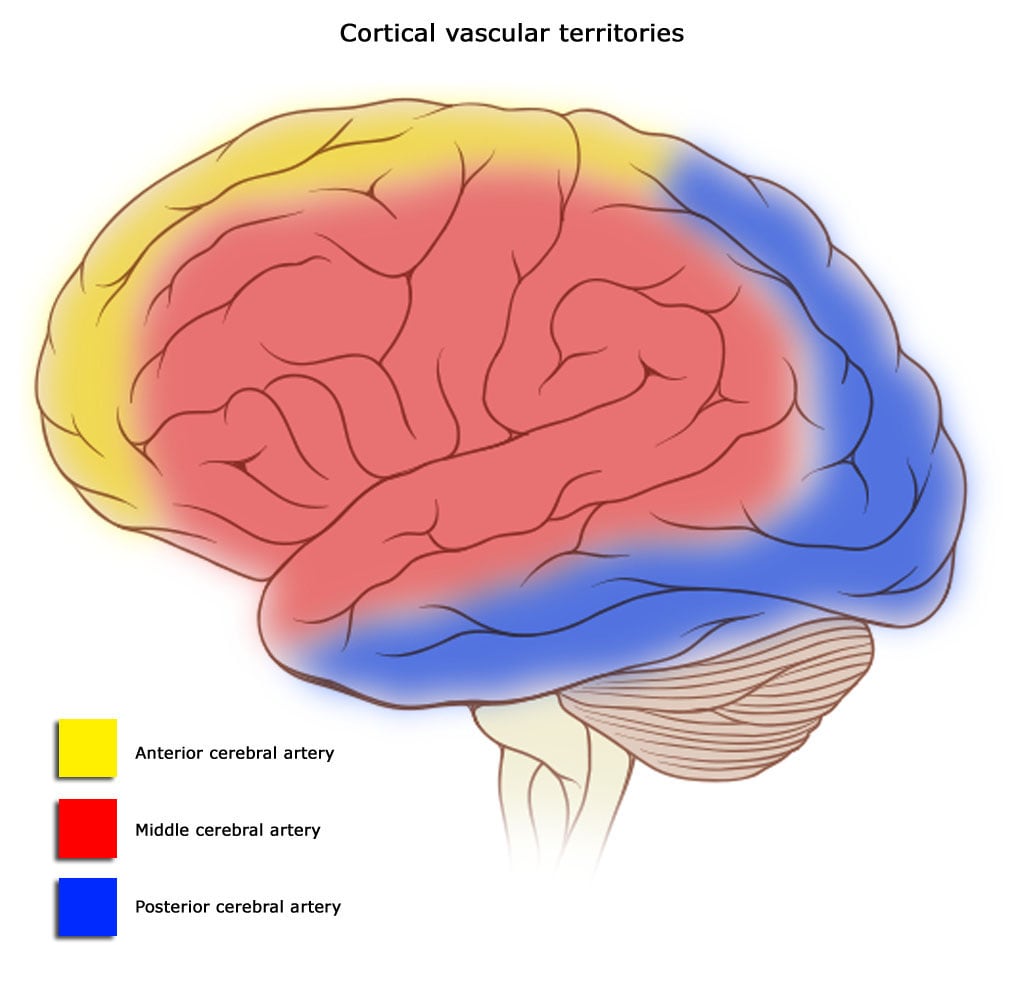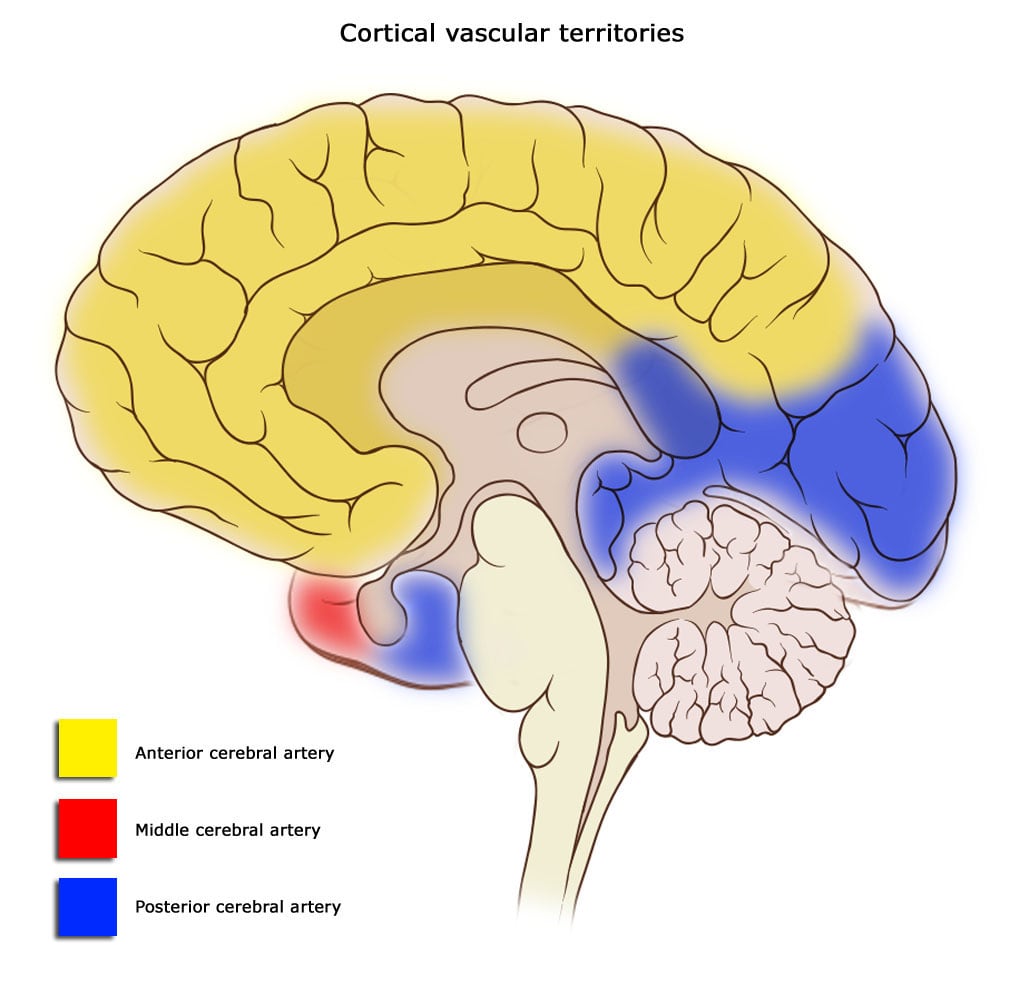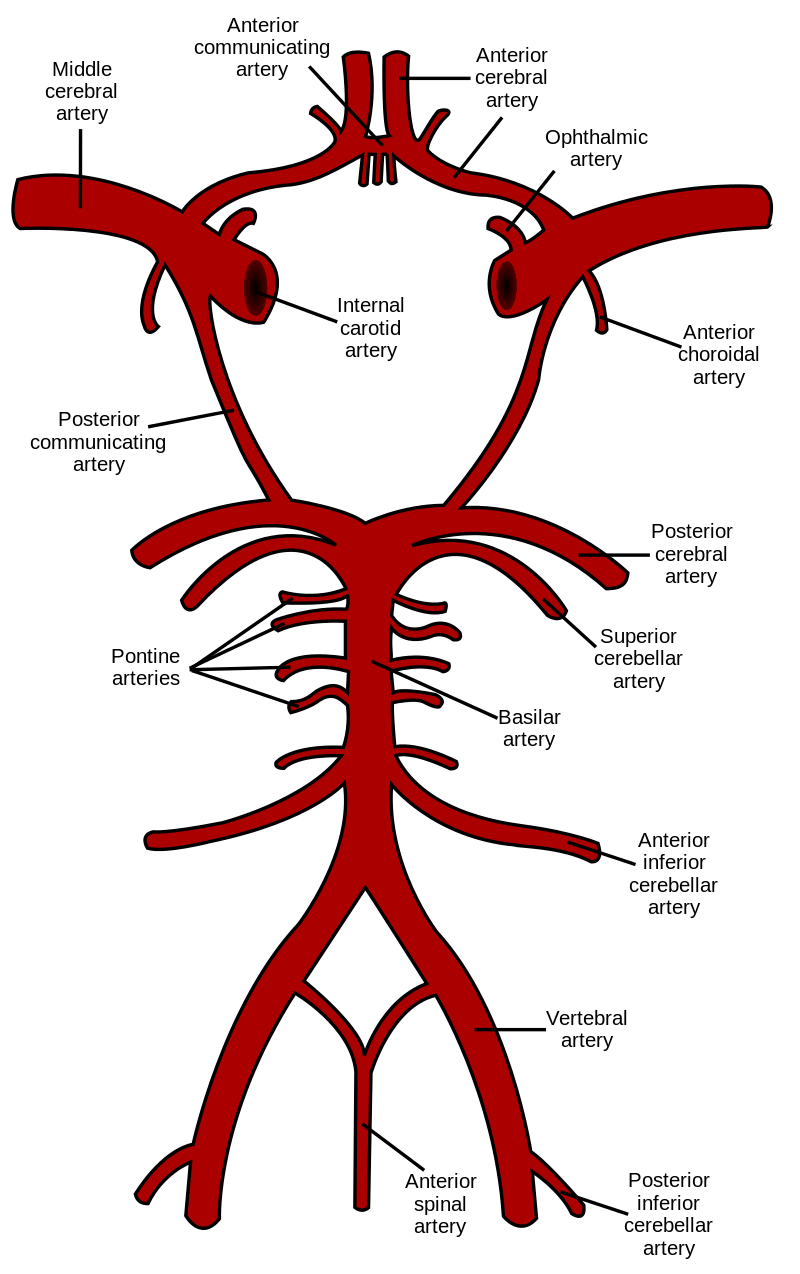The brain is supplied by an anterior and posterior circulation. They anastomose at the base of the brain to form the “circle of Willis”. The internal carotid artery gives rise to the anterior cerebral, middle cerebral and posterior communicating arteries.


The vertebral arteries join to form the basilar artery which divides into two posterior cerebral arteries and superior cerebellar arteries. The internal carotid arteries, two anterior cerebral arteries with the anterior communicating artery, the posterior cerebral and posterior communicating arteries and the basilar artery form the circle of Willis.

Watershed regions are regions that receive dual blood supply from the most distal branches of two large arteries. Watershed zones in the brain are between the anterior/middle cerebral arteries and between the posterior/middle cerebral arteries. These areas are prone to ischemia such as following hypotension. Watershed infarcts present as “man in barrel” syndrome characterized by weakness affecting more proximal than distal extremities.
Cerebral veins drain into a couple of dural venous sinuses which ultimately drain into the internal jugular veins and from there to the brachiocephalic veins which finally drain into the superior vena cava. They are situated between the periosteal and meningeal layer of the dura mater. These are superior and inferior sagittal sinuses which run superiorly and inferiorly, respectively, in the falx cerebri; the straight sinus, transverse sinus, S shaped sigmoid sinus, cavernous sinus and superior petrosal sinus. The superior sagittal sinus has arachnoid granulations through which CSF is drained into the venous blood. All dural venous sinuses are valveless.
Each cavernous sinus is located lateral to the sella turcica and extends from the apex of the orbit anteriorly to the apex of the petrous temporal bone posteriorly. The body of the sphenoid bone is medial to the sinus. It is divided into multiple small cave like divisions by fibrous septa hence the name cavernous. It carries some vital anatomical structures making it highly relevant clinically.
The BBB forms a barrier that protects the brain from external toxins and pathogens and also helps to tightly regulate the biochemical and physiological milieu within the brain. It is anatomically made of endothelial cells of the CNS, pericytes, the basement membrane and astrocytes especially their foot processes. The CNS endothelial cells are joined together by continuous tight junctions. Molecules claudin, occludin, cadherin and JAM / junctional adhesion molecules are important for maintaining the tight junctions. Highly lipid soluble substances can move across the BBB by diffusion e.g. anesthetics. Ischemia, hypoxia and inflammation can damage the integrity of the BBB. Structures in the circumventricular areas lack BBB as they have discontinuous tight junctions allowing for mixture with systemic blood. They include pituitary gland, area postrema, pineal gland, choroid plexus, median eminence, paraphysis and preoptic recess. The area postrema is also called vomiting centre.
Sign up for free to take 13 quiz questions on this topic